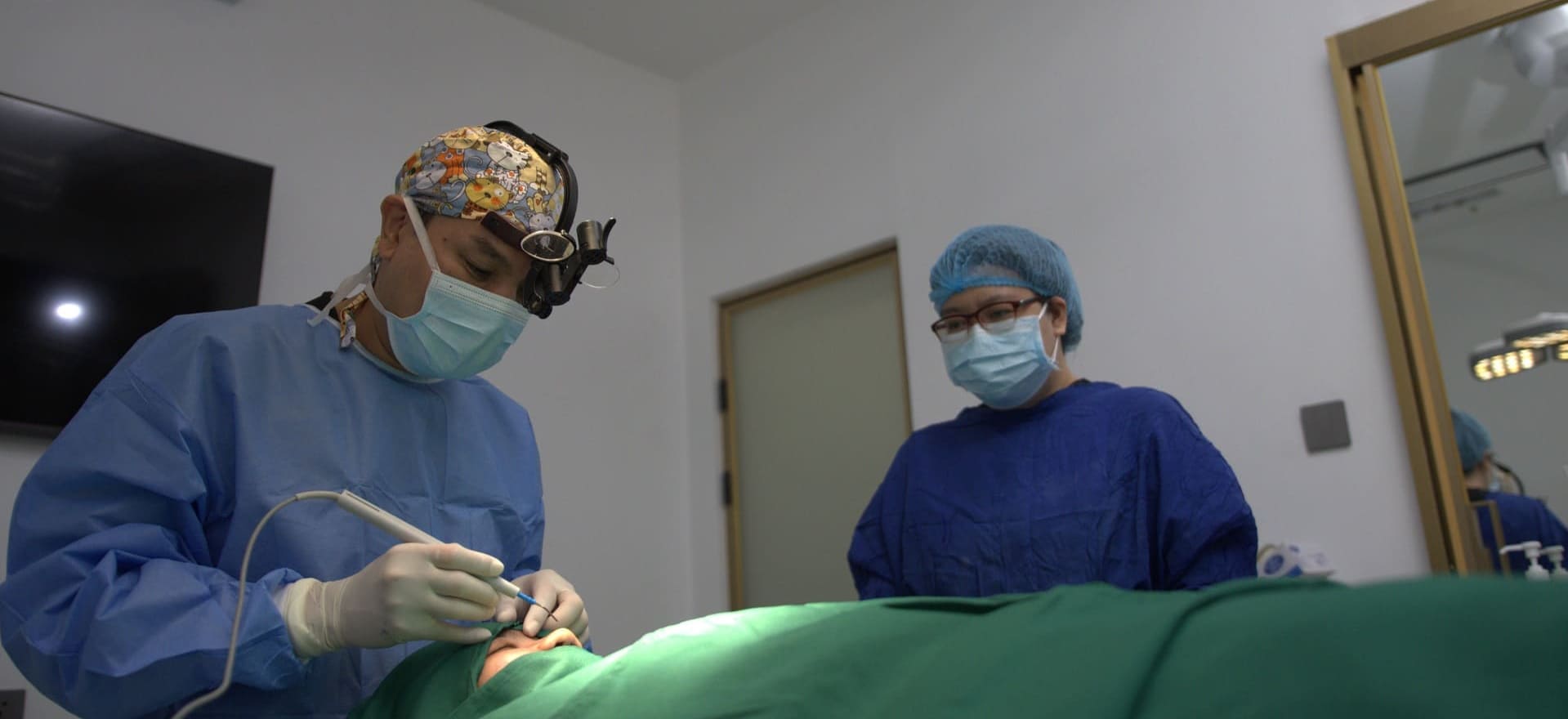
Brow Lift
What is Brow Lift?
A brow lift is a cosmetic procedure that gently raises the eyebrows and smooths out deep lines across the forehead and between the brows. The goal? To open up the eyes, lift the face, and restore a naturally refreshed look—without changing your expressions or making you look “done.”
There are different techniques depending on your needs, from minimally invasive endoscopic lifts to more targeted approaches that adjust specific areas. Dr. Raynald will recommend the best option based on your facial anatomy and the kind of results you’re looking for.
Whether you’re hoping to look more awake, feel more confident, or simply refresh your appearance, a brow lift can make a subtle but powerful difference.
At The Raynald Center, we focus on creating seamlessly natural results—you, just more lifted, relaxed, and radiant.
Pre-Procedure Guidelines
✅ 1–2 Weeks Before Surgery
Discontinue use of:
• Blood thinners (Aspirin, Ibuprofen, Fish Oil, Vitamin E) unless advised by your physician
• Herbal supplements that may increase bleeding (e.g., Ginkgo, Ginseng, Garlic)
Avoid:
• Smoking and alcohol (can delay healing and increase bruising)
• Facials, chemical peels, microneedling, or laser treatments in the upper face
• Dental work or any medical procedures unrelated to your brow lift
Inform your surgeon if you:
• Have a history of poor scarring, keloids, or delayed wound healing
• Are taking medications like steroids, isotretinoin, or hormonal therapies
• Recently had any injectables or thread lifts in the forehead or eye area
✅ 3–5 Days Before Surgery
• Stay well hydrated and get adequate rest
• Avoid alcohol and caffeine
• Stop applying active skincare (retinoids, AHAs, exfoliants) to the forehead
• Prepare loose, button-down clothing for surgery day
• Arrange help for post-op recovery if needed (especially during the first 24–48 hours)
• Begin any prescribed medications (antibiotics or antivirals, if applicable)
Post Procedure Guidelines
🧊 Immediately After Surgery (Days 1–3)
You may experience:
• Swelling, bruising around the eyes or forehead, or mild tightness
• Sensation of numbness or tenderness near the incision sites
Do:
• Apply cold compresses (10–15 mins every few hours) to reduce swelling
• Keep your head elevated—even during sleep
• Take prescribed medications exactly as directed
• Clean incision sites gently with sterile saline or as instructed
• Wear your surgical headband or compression dressing (if provided)
Avoid:
• Bending over, straining, or lifting heavy objects
• Rubbing, scratching, or touching the incision area
• Makeup, saunas, hot showers, or hair treatments
💧 Days 4–7
• Swelling and bruising will start to fade
• Mild tightness, numbness, or itching may still be present
Continue to avoid:
• Intense workouts or sweating
• Sun exposure or any heat-based treatments
• Smoking and alcohol
Do:
• Keep incisions clean and dry
• Use a gentle moisturizer and high-SPF sunscreen when going outdoors
• Follow all aftercare instructions from your surgical team
🩺 Weeks 2–4
• Sutures are usually removed within 7–10 days if non-dissolvable
• Residual swelling or minor asymmetry may still be visible and will settle gradually
Follow-up care:
• Attend your post-op appointments for monitoring and suture removal
• Avoid facial massages, facials, or cosmetic procedures unless cleared by your doctor
• Resume light activities as advised
